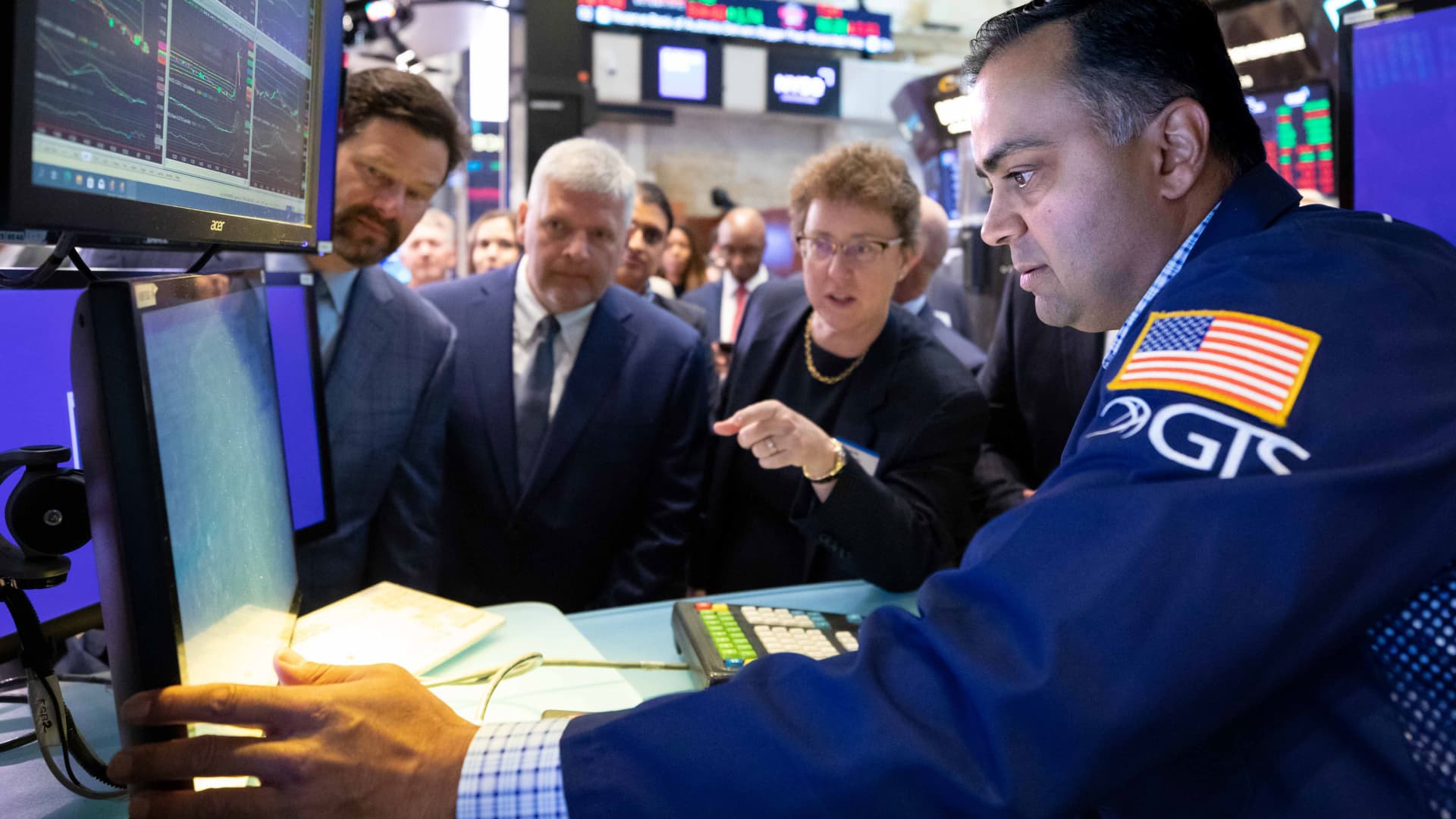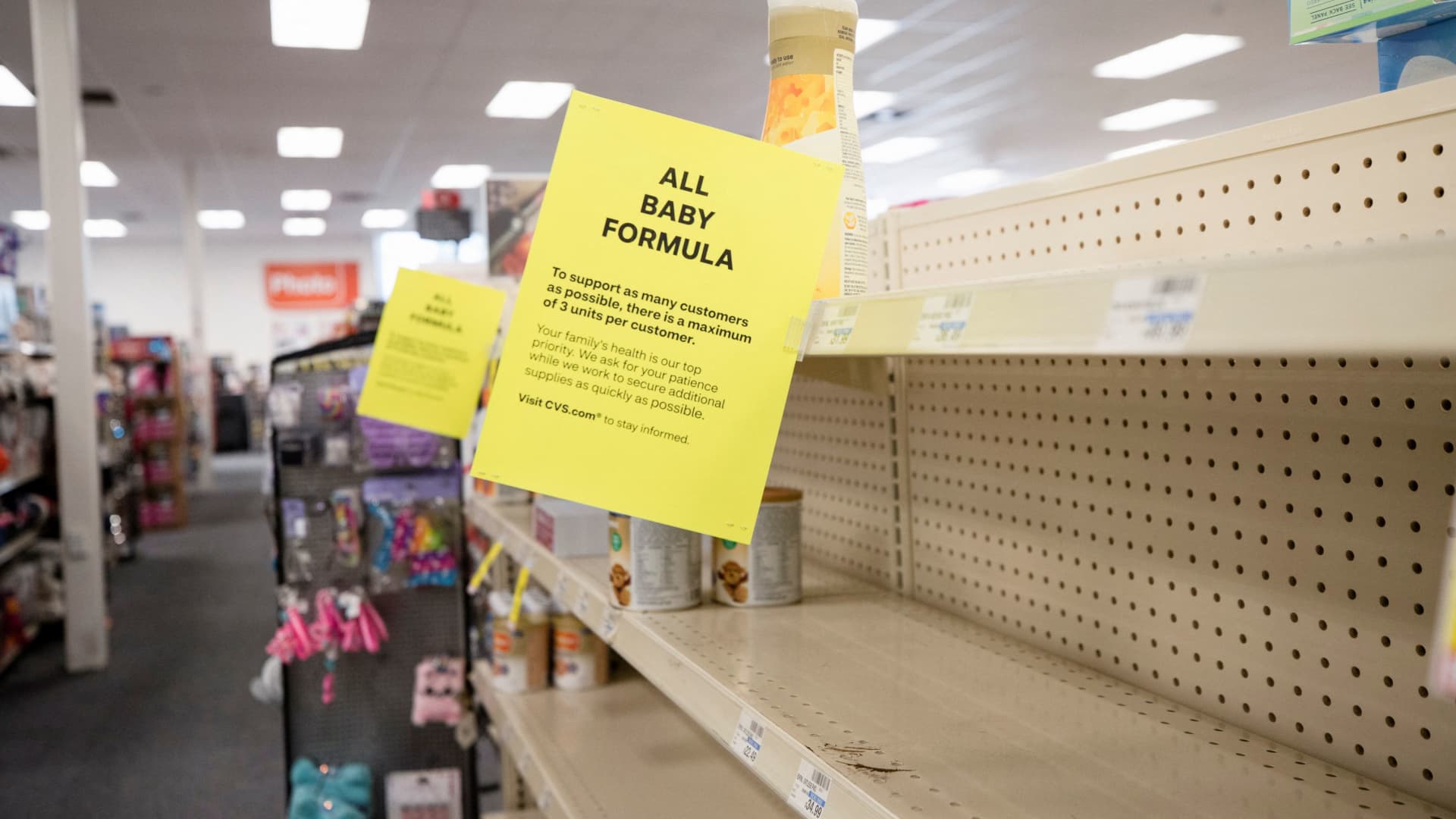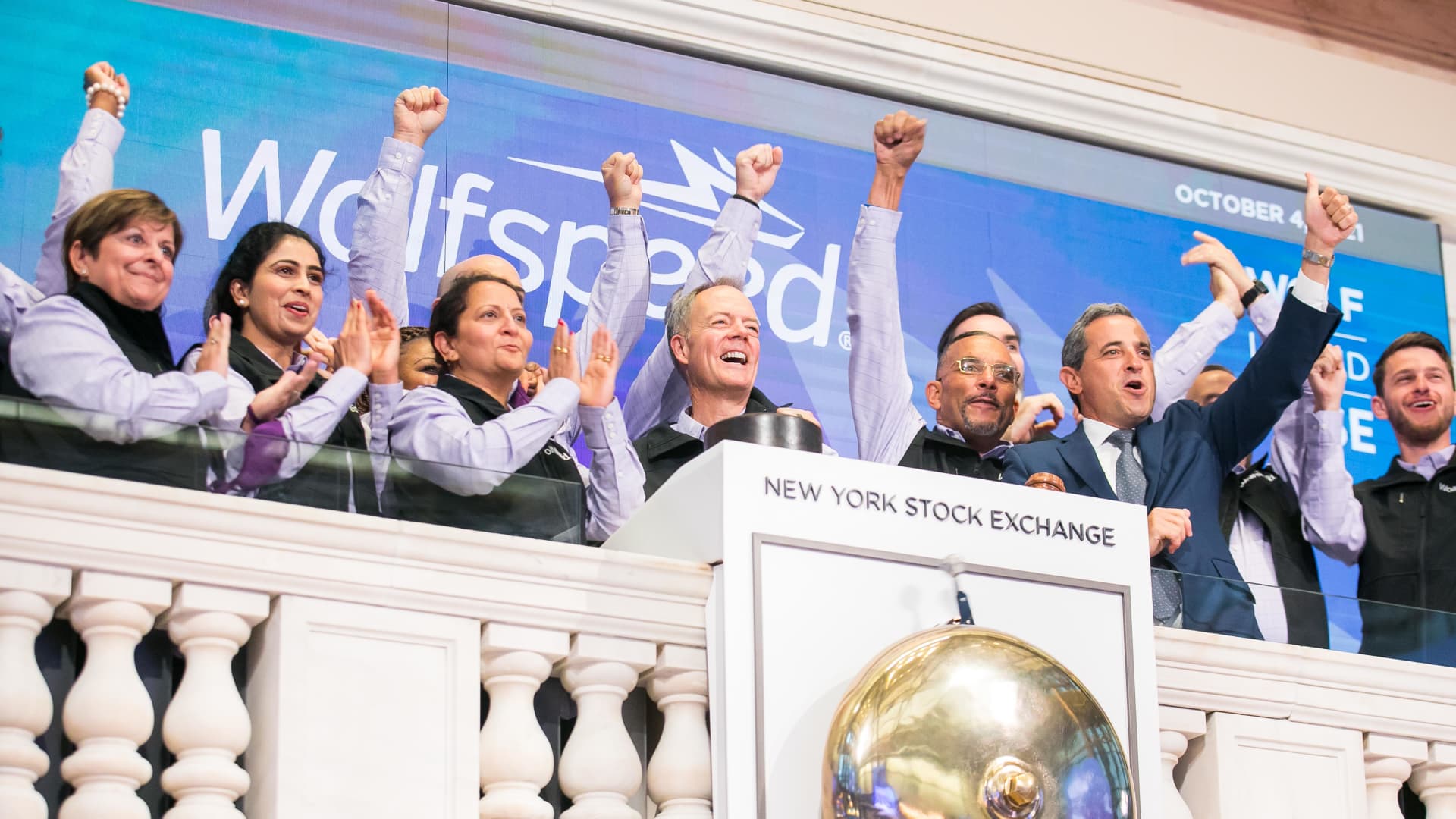US Markets
Saturday, July 2nd, 2022 6:00 am EDT

The third quarter could be a turning point for stocks this year, separating the dismal first half from a possible year-end rally. The summer months are critical, as they could very well determine whether the market is able to shake off its current extreme bearishness by the end of the year. Normally the three-month period is considered the seasonally weakest time of year for the market. However, historically, in a year with a mid-term election, it is even more negative, with the third quarter averaging a loss before a rebound in the fourth quarter. This year, the third quarter could be even more important — and uncertain. It is expected to provide valuable insight into the economy. The S & P 500 slumped 16.8% in the second quarter and was down 20.9% for the year so far, its worst first half since 1970 . “Inflation is the dominant story. It’s inflation that dictates how tough the Fed gets, and whether we go into recession,” said Ethan Harris, head of global economics research at Bank of America. “You can watch the growth data and see the weakness, but if we’re going to go into recession, it’s ultimately the Fed that causes the recession.” A wild card for the markets — and inflation — is what happens to the price of oil and fuel. Russia’s invasion of the Ukraine had driven energy prices sharply higher, and resulted in short supplies globally. In July, President Joe Biden is expected to visit Saudi Arabia , and the administration’s hope is the kingdom could add more oil to the global market, relieving some pressure on prices. The fear of recession is a major concern for investors. Wall Street’s economists have mixed views on when and whether the economy enters a recession, but investors are more pessimistic. “In our client conversations, I think the probability has shifted,” said Julian Emanuel, head of equity, derivatives and quantitative strategy at Evercore ISI. “We were okay with the idea that 70% of our clients thought there would be a recession in the next 18 months. That number has risen to 85%, and fully half of them believe we are in one now. That changes the dynamics.” The price of oil could be a factor that tips the economy into recession, if there is another big spike. West Texas Intermediate crude futures were around $107 per barrel Friday, off a high near $130 per barrel in March. “The classic recession historically has been a tight Fed and oil shock coming at the same time. That one-two punch would be a concern. I don’t think there’s a magic threshold. We’re already at levels where it’s having an impact on the economy,” Harris said. “Setting new records for gasoline prices is not good for consumer confidence and spending.” Fed’s quest to tame inflation Economic data during the course of the quarter may provide clues as to how much the Federal Reserve will have to pump up interest rates to stop the worst inflation in four decades. The first major report is the June jobs report, July 8, followed quickly by the June consumer price index on July 13. A key question is whether inflation will finally peak, after surprising to the upside over the last several months. Central bank officials meet twice during the quarter, on July 26 and 27, and again on Sept. 20 and 21. The Fed is widely expected to follow up its June interest rate hike of three-quarters of a point with a similar boost in July, but the September rate hike path is less clear. The end of August will be important for potentially more clarity on the Fed’s stance, since central bankers meet in Jackson Hole, Wyoming. On Aug. 25 to Aug. 27, the Kansas City Federal Reserve’s annual symposium will focus on economic constraints and Fed policy, and there is likely to be a major address from Chairman Jerome Powell . “They have a choice,” Harris said. If inflation is tamer, they can back off aggressive rate hikes. “If inflation doesn’t show improvement, they have to just keep hiking, adding to the risk of recession.” The widely watched consumer price index hit a high of 8.6% in May, the highest since 1981. “It’s a more plausible story to say the Fed can barely skirt a recession in this cycle. … At this stage you have two outcomes,” Harris said. “You either have growth slow close to zero or you have a mild recession. I think the probability of a major recession is low and the Fed’s forecast of a perfect soft landing is implausible as well.” Powell’s tough talk on inflation this past week was a negative catalyst for stocks, and one reason Emanuel believes investors became even more pessimistic about the economy in the final week of the second quarter. “Powell made comments that essentially said to me that the window is narrowing and some pain is needed,” he said. “There is an element of ‘Volckerization’ to this.” Former Fed Chairman Paul Volcker famously raised interest rates to as high as 20% to crush the inflation that ran rampant through the 1970s and into the early 1980s. “Powell was making it apparent that pain needs to be felt, and the fact is pain is already being felt so when you look at it, the market is already telling you there’s going to be rate cuts next year,” said Emanuel. David Bianco, chief investment officer, Americas at DWS, said he expects the Fed to raise interest rates at every meeting this year until it gets to a fed funds rate of 3.5% by the end of the year. The fed funds target rate is currently 1.50% to 1.75%. “We are of the view a recession, a small one, is likely in the U.S. in the first quarter of 2023, probably the fourth quarter and the first quarter of 2023,” said Bianco. “A small one with a still inflationary environment. … I think it’s a very different type of recession than we’ve seen before. Banks are not going to take the brunt of it.” For that reason, banks are one of the holdings he favors in the DWS Sector Strategy Fund . He is also cautious and has underweighted some cyclical sectors that would benefit in a rebounding economy — like materials, industrials and the cyclical part of technology. A ‘very, very interesting’ earnings season With the third quarter just underway, the stock market is heading into the second-quarter earnings season, and that’s one of the next big tests for the market. Corporate earnings season gets underway July 14 and 15, when JPMorgan , Citigroup and other big banks report. “My belief is we’re likely to see more downward revisions in the July earnings season. I think companies will sound more cautious in their guidance of the second half,” said Jimmy Chang, chief investment officer of Rockefeller Global Family Office. “More companies may echo what [JPMorgan CEO] Jamie Dimon said about a hurricane on the horizon or Elon Musk ‘s ‘super bad feeling ‘” about the economy, he said. That could create tumult for a market that is expecting double-digit earnings growth in the second half. Following a gain of 11.4% in the first quarter, analysts expect second-quarter earnings growth to slow to 5.6%, but for the third and fourth quarter, estimates still show S & P 500 earnings 11% or greater, according to I/B/E/S data from Refinitiv. “This earnings season set up is very, very interesting. You have deep, deep pessimism and a deep expectation for earnings downgrades,” said Evercore’s Emanuel. Emanuel said he expects stocks to be impacted as earnings expectations are ratcheted down. He expects S & P 500 companies will earn about $226 for the 2022 year, compared with Refinitiv’s analysts’ forecast of just over $229. “It is our expectation that earnings are going to come down to where we are and perhaps even below where we are,” Emanuel said. “If it’s not apocalyptic along those lines, it’s already extremely discounted in the price. Look at FedEx. Companies can actually surprise to the upside,” he said. “It is not a layup that you’re going to have this market down. That is very widely telegraphed and very widely expected.” FedEx shares rose after the company provided a more upbeat forecast than expected, after its mixed fiscal fourth-quarter earnings on June 23. Energy stocks are expected to see the best gains for the quarter, up more than 220% from last year’s earnings. The second best improvement is expected to come from industrials, up nearly 31%, followed by materials, up nearly 19%, according to Refinitiv. Sectors with the biggest declines are expected to be financials, down nearly 20%, and communications services, with earnings down 14%, according to Refinitiv. Technology earnings are expected to rise by 2.5%. Strategists say the market could still make some upward progress ahead of the earnings season, even after this past week’s sell-off. Emanuel said it could be the July Fed meeting that snuffs a market advance as investors digest another large rate hike. Sam Stovall, CFRA chief investment strategist, agreed that the market may make more headway before hitting turbulence later in July. “If history repeats itself from a timing perspective, we get a tradeable bounce now, but then we start to get Q2 reports coming in with downward guidance. …The market is still way overvalued, and then we get the capitulation sell-off sometime in Q3,” he said. According to Stovall, the S & P 500 averaged a third-quarter gain of 0.6% in all years since World War II. But in the second year of a presidency, when there are mid-term elections, the index instead averaged a decline of 0.5% and they are even worse if there’s a weak first half. The S & P has fallen nearly 16% in the second quarter so far, and the quarter is typically the worst of all in a mid-term year, averaging a 1.9% decline. In all other years, the second quarter has gained 2.2%, normally the best quarter. Mid-term election impact Then there’s the fourth quarter, which normally rises 4.1% on average. But in mid-term years, the S & P 500 has bounced even harder, averaging a 6.4% advance. DWS’ Bianco said he expects the market could stay in a trading range and not go much lower in the third quarter. He also does not expect stocks to automatically gain in the fourth quarter since the mid-term election has risks that some investors are not yet considering. “I don’t think the coast is clear during mid-term elections, and the reason is it’s a mid-term election where we’re going to keep the same president and we’re going to have the Democratic party in a lame duck session,” he said. Wall Street widely expects Congress could turn over to Republican hands in the House, and there’s the potential too for gains in the Senate. “I think we’re going to find the lame duck session is where a lot of risk comes from policy,” said Bianco. He said Democrats could possibly push through a new ‘Build Back Better’ fiscal program or tax hikes for businesses and on stock buybacks. He said if oil prices are not lower, refiners or producers could also find Congress trying for a windfall profit tax. “It could end up stopping that late December, early January rally,” Bianco said. Finding a bottom Stovall said the pattern of a rally into year-end may occur this year, and the stock market could bottom in the third quarter. “We have to traverse the no man’s land of the third quarter. I think the fourth quarter proves optimism, providing we get capitulation in the third quarter,” said Stovall. “History says that’s as good a time as any for that to occur.” The market has yet to see panic selling that marks capitulation, and that could come during the third quarter, he said. Stovall does not expect a recession in the near future, but he sees the market pricing in a shallow one. Down almost 24% at its low, the S & P 500’s loss is still below the average decline of a recessionary bear market. Bear markets linked with recessions tend to last longer, about 15 months versus six months. Bear market declines averaged 35% when there was a recession, versus an average 27% decline when there was not a contraction. The negative performance of the first half doesn’t bode well for a strong second half, Stovall said. In periods when the first half was very negative, the S & P 500 declined sharply in the third quarter. In the five worst instances since World War, the S & P lost an additional average 6.8%, and in the 10 worst years, it fell an additional 2.2%. Emanuel said a case could be made that stocks have bottomed or are close to a bottom since other assets, like crypto, may have already troughed. While a further bear market rally is possible this summer, the market is just as likely to retest its lows. “We’ve said this was a bear market rally, and the definition is that it is not the bottom. There will be a retest at some point,” said Emanuel. Evercore doesn’t expect a recession this year or next. “If you’re not going to have a recession, you may have already made a bottom,” he said, noting the recent low is a bottom, if not the bottom. If a shallow recession is ahead, as some economists expect, there could be a shallow retest, he added. “If it’s a deeper recession, you have potential downside of an additional 15% to 20% beyond that,” Emanuel said. But for sure, one way out of the negative market spiral is for oil prices to reverse. That could happen in the event of a recession, or if energy supply stabilizes. “The bottom of this bear market won’t likely happen until gasoline prices decline meaningfully,” Emanuel noted. Energy wild card The price of oil and other energy hangs like a sword over the market, capable of slicing off profit streams from consumer-oriented sectors and industrial and manufacturing industries, heavily dependent on fossil fuels. Brent international crude futures were at about $115 per barrel Thursday, as the quarter came to a close. OPEC plus this past week decided to make its final addition to oil production in August, as planned. Helima Croft, head of RBC global commodities research, said there could be developments in Saudi Arabia on increased production around the time that Biden visits next month. Sanctions on Russia mean Europe has had to look elsewhere for much of its oil and refined fuel products. Natural gas has also become exorbitant as Russia cuts back on supplies and Europeans turn to more sources of imported liquified natural gas. Europe’s decision to sanction Russian oil also means there will be a bigger scramble or crude globally. “The challenge for the Biden administration is the absence of abundant spare barrels,” noted Croft. She added that White House officials say they are not making a specific request of the kingdom and are instead looking for a collective output increase from Gulf countries. “However, we do not see any significant stash of barrels outside of Saudi Arabia, and think that an increase of 1 mb/d may represent something of a near-term soft ceiling based on the country’s production performance in April 2020 during the peak of the price war with Russia,” Croft said. Bianco sees critical questions later in the quarter. “When we go into autumn, it’s really going to be time to decide whether Europe has enough natural gas and other energy to get through the winter,” he said. “This is going to be a long lasting conflict in our view, and Europe is going to have to figure out more ways to be less dependent on Russian energy and natural gas.” Bianco said the energy crisis could result in rationing there, and European officials may have to choose among industries to make energy sacrifices. “Skepticism about a European recession is spilling into our market,” said George Goncalves, MUFG head of global macro strategy. The U.S. would also be impacted. “We can’t have our largest trading partner going into a recession.” Bank of America’s Harris said if there’s no big spike in oil, inflation should peak in the next couple of months, but the issue for markets will be how quickly it abates. “I think it’s going to be a very slow process. I think the more decisive evidence of inflation coming down isn’t until late this year, early next year. The labor market needs to slow down dramatically to really get inflation down,” he said. “They need to get job growth below 100,000.” This post has been syndicated from a third-party source. View the original article here.




